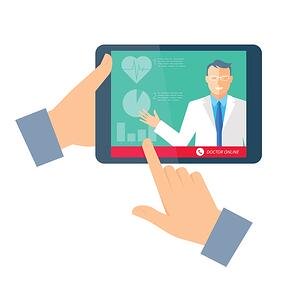How Scribes Are Used in The Optical Industry Today
Scribes in the medical field are typically there to assist doctors with documentation and clerical responsibilities so they can focus more on providing quality care to patients. In some cases, a scribe can act as more than just a data collector, and can help with other things like operations, quality control, and maybe even pre-testing. Some ODs see the additional benefits of taking less work home with them and the ability to see more patients in day.
But, every OD and workflow is different and what works for one office might not work for you. Some EHR systems make it hard to be efficient with data entry during an exam, but with others you might realize you can be equally as efficient without a scribe in the office. We'd love to hear about your practice's experience with scribes in the comments!
Does Your Office Need a Scribe or a More Efficient EHR System?
Benefits of a Scribe:
- Increased face-to-face interaction
- Time savings
- Relief from additional office tasks
Benefits of Efficient EHR:
- Fewer labor costs
- Less dependence on scribe turnover
- More control over charting
- Tablet-friendly data input
EHR systems that are outdated often require too much clicking and data entry to allow doctors to feel efficient during their exams. It's easy to feel disconnected from patients when your back is turned because you're forced to enter patient information at a desktop in the corner of the room, and the time spent documenting can make the exam last longer than necessary. But, modern EHR companies have come a long way and have learned to design systems around some of these common pain points that many doctors have been facing for years when it comes to documentation.
Let's look at a few ways modern EHRs have evolved to help doctors spend less time documenting, and more time face-to-face with patients.
- Tablet-friendly Interfaces
Using an EHR software that is tablet-friendly gives you more flexibility to move around the practice without turning your back to patients or being glued to a desktop. Tablets make it easy to input data and to share the screen with patients when reviewing their health information. - Patient Education Materials
In many cases, patients learn and retain information better when shown through photos or videos. Having access directly in your EHR system to patient education materials that you can share during the exam will likely stick with them longer and prove overall better health outcomes. Accessing your education materials without having to log into a new tool or flip between systems helps keep the workflow seamless. - Increased Automation and Data Syncing
Having a practice management and EHR system that are built to talk to each other and transfer information seamlessly will help you decrease on the amount of data entry for each patient. On top of having your practice management and EHR working together, having bundled tools like built in code verification, automated patient recall, and frame catalogs will help keep your workflow running efficiently.
Looking for more tips to keep your practice efficient? Download our latest eBook for advice from the industry's leading ODs.

